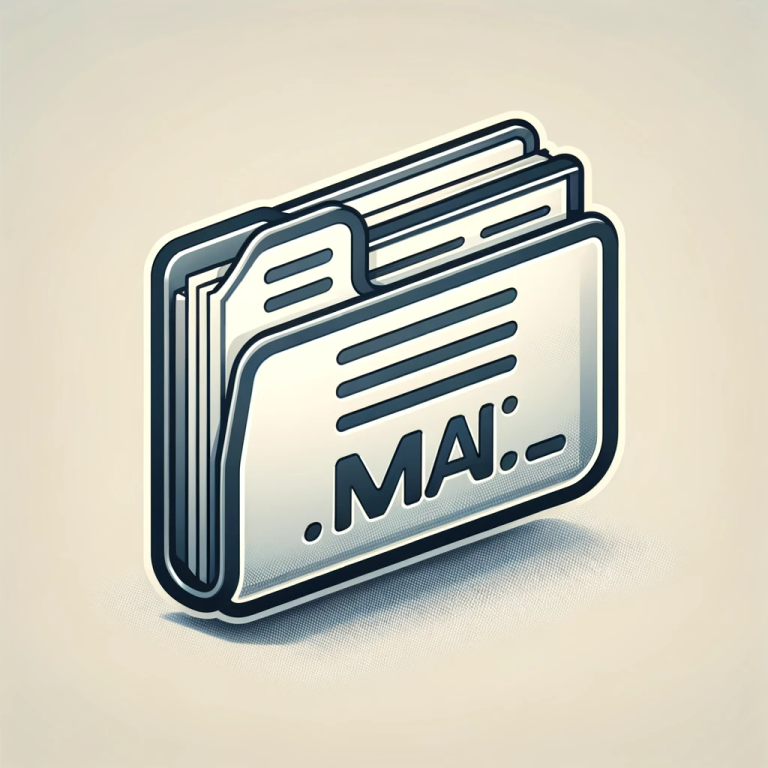.MAI File Extension

Microsoft Mail File
| Developer | Microsoft |
| Popularity | |
| Category | Data Files |
| Format | .MAI |
| Cross Platform | Update Soon |
What is an MAI file?
The .MAI file extension is primarily associated with Microsoft Mail, a vintage email application. These files are pivotal in the realm of digital communication, particularly in the context of early email technology.
They serve as containers for email data, including message content, attachments, sender, recipient information, and more.
More Information.
The history of the .MAI file is intrinsically linked to the evolution of email as a communication tool. In the late 1980s and early 1990s, when email was becoming a fundamental part of business and personal communication, Microsoft Mail emerged as a popular solution.
The primary purpose of the .MAI file was to store email messages, allowing users to save, archive, and manage their digital correspondence efficiently.
Origin Of This File.
Microsoft Mail, the progenitor of the .MAI file, was an early player in the world of electronic mail applications. Developed by Microsoft, this software was among the first to facilitate email communication over networks.
The .MAI file format was created as a proprietary format for storing email messages handled by Microsoft Mail.
File Structure Technical Specification.
A .MAI file is structured to contain various components of an email message. This includes:
- Header Information: This includes the sender’s and recipient’s email addresses, subject line, timestamp, and other metadata.
- Message Body: The actual content of the email, which can be in plain text or formatted.
- Attachments: Binary data for files attached to the email.
How to Convert the File?
Converting .MAI files to more modern and widely supported formats can be done using specialized email conversion software. Here’s a step-by-step guide on how to convert .MAI files:
- Choose Conversion Software: Start by selecting a reliable email conversion software that supports the conversion of .MAI files. Some popular options include Aid4Mail, Emailchemy, and SysTools MailPro+.
- Install the Software: Download and install the chosen conversion software on your computer. Follow the installation instructions provided by the software provider.
- Launch the Software: After installation, launch the email conversion software from your computer’s applications or programs menu.
- Select the Source .MAI File: In the conversion software’s interface, locate and select the source .MAI file that you want to convert. You may need to browse your computer’s file system to find the .MAI file.
- Choose the Output Format: Depending on your needs, choose the desired output format for the converted file. Common formats include .EML (for email messages) and .PST (for Outlook data). The available output formats may vary depending on the software you’re using.
- Configure Conversion Settings: Some conversion software allows you to configure specific settings for the conversion process. This may include options for handling attachments, folder structure, and other details. Review and adjust these settings as needed.
- Start the Conversion: Once you’ve selected the source .MAI file and configured the settings, initiate the conversion process by clicking a “Convert” or “Start” button within the software. The software will begin processing the .MAI file and converting it to the chosen format.
- Wait for Completion: Depending on the size and complexity of the .MAI file, the conversion process may take some time. Be patient and wait for the software to complete the conversion.
- Save the Converted File: Once the conversion is finished, the software will typically prompt you to specify a location to save the converted file. Choose a destination folder on your computer and provide a suitable file name for the converted file.
- Access the Converted File: You can now access the converted file using an email client or application that supports the chosen output format. For example, if you converted the file to .EML format, you can open it with email clients like Microsoft Outlook, Mozilla Thunderbird, or Apple Mail.
Advantages And Disadvantages.
Advantages:
- Compatibility: As a Microsoft-created format, .MAI files were easily integrated into Windows environments.
- Structure: The clear separation of different email components within the file made it easy to parse and manage emails.
Disadvantages:
- Proprietary Nature: Being proprietary, .MAI files weren’t as universally accessible as more standard formats like .EML.
- Obsolescence: With the advancement of email technology, .MAI files have become largely outdated.
How to Open MAI?
Open In Windows
- Use older versions of Microsoft Mail if available.
- Convert .MAI files to .EML or .PST formats using conversion software.
- Open converted files with email clients like Outlook or Thunderbird.
Open In Linux
- Convert .MAI files to .EML format using conversion software.
- Open .EML files with email clients like Thunderbird or Evolution.
Open In MAC
- Convert .MAI files to .EML format using conversion software.
- Open .EML files with Apple Mail.
Open In Android
- Convert .MAI files to .EML format using conversion software on a computer.
- Transfer converted .EML files to Android.
- Use email apps like K-9 Mail or BlueMail to open .EML files.
Open In IOS
- Convert .MAI files to .EML format using conversion software on a computer.
- Transfer converted .EML files to iOS.
- Use email apps like Outlook or Apple Mail to open .EML files.
Open in Others
- Convert .MAI files to a compatible format.
- Find email clients or apps on the specific platform that support the converted format.













